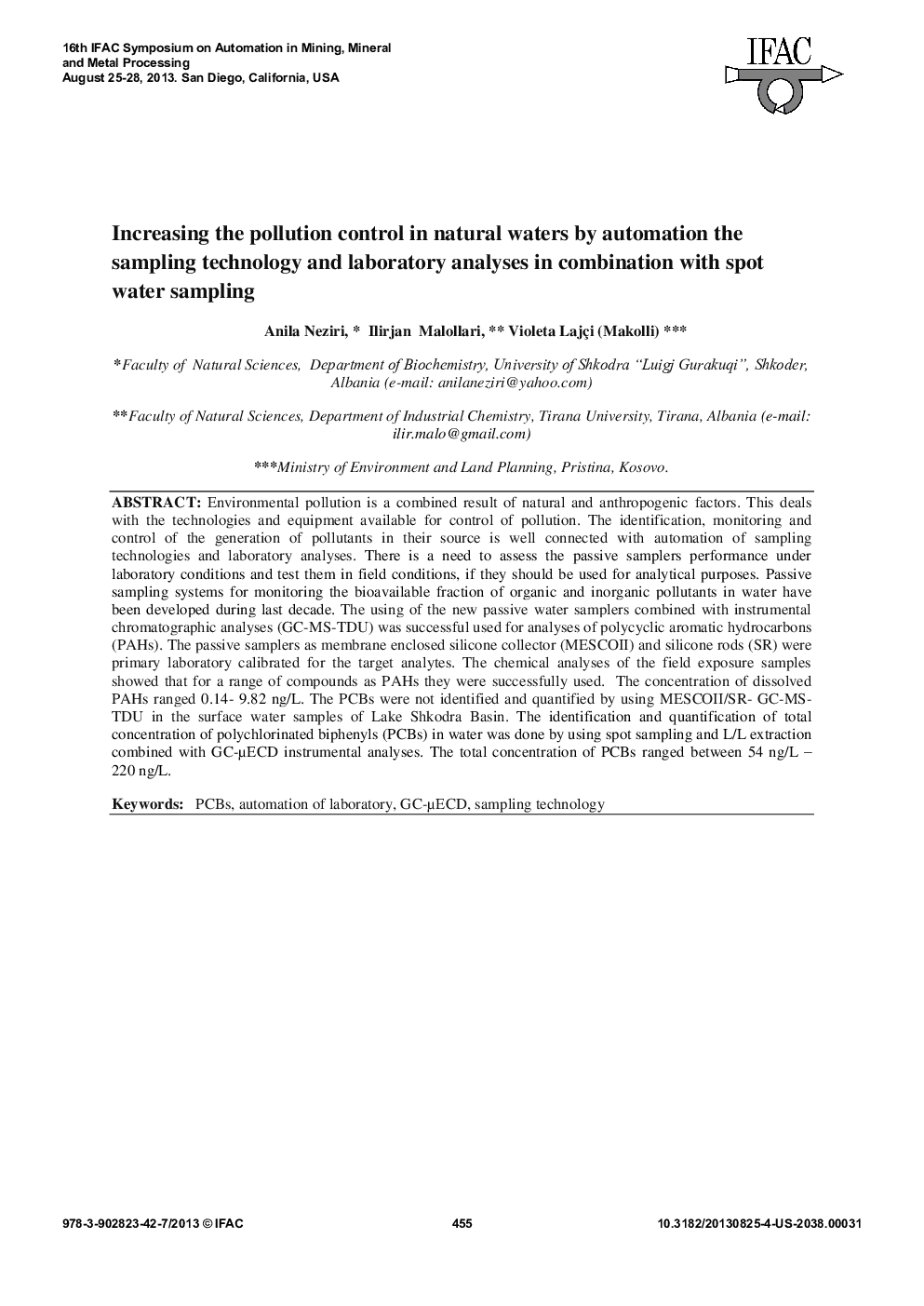| کد مقاله | کد نشریه | سال انتشار | مقاله انگلیسی | نسخه تمام متن |
|---|---|---|---|---|
| 709387 | 892065 | 2013 | 4 صفحه PDF | دانلود رایگان |

Environmental pollution is a combined result of natural and anthropogenic factors. This deals with the technologies and equipment available for control of pollution. The identification, monitoring and control of the generation of pollutants in their source is well connected with automation of sampling technologies and laboratory analyses. There is a need to assess the passive samplers performance under laboratory conditions and test them in field conditions, if they should be used for analytical purposes. Passive sampling systems for monitoring the bioavailable fraction of organic and inorganic pollutants in water have been developed during last decade. The using of the new passive water samplers combined with instrumental chromatographic analyses (GC-MS-TDU) was successful used for analyses of polycyclic aromatic hydrocarbons (PAHs). The passive samplers as membrane enclosed silicone collector (MESCOII) and silicone rods (SR) were primary laboratory calibrated for the target analytes. The chemical analyses of the field exposure samples showed that for a range of compounds as PAHs they were successfully used. The concentration of dissolved PAHs ranged 0.14- 9.82 ng/L. The PCBs were not identified and quantified by using MESCOII/SR- GC-MS-TDU in the surface water samples of Lake Shkodra Basin. The identification and quantification of total concentration of polychlorinated biphenyls (PCBs) in water was done by using spot sampling and L/L extraction combined with GC-μECD instrumental analyses. The total concentration of PCBs ranged between 54 ng/L – 220 ng/L.
Journal: IFAC Proceedings Volumes - Volume 46, Issue 16, 2013, Pages 455-458